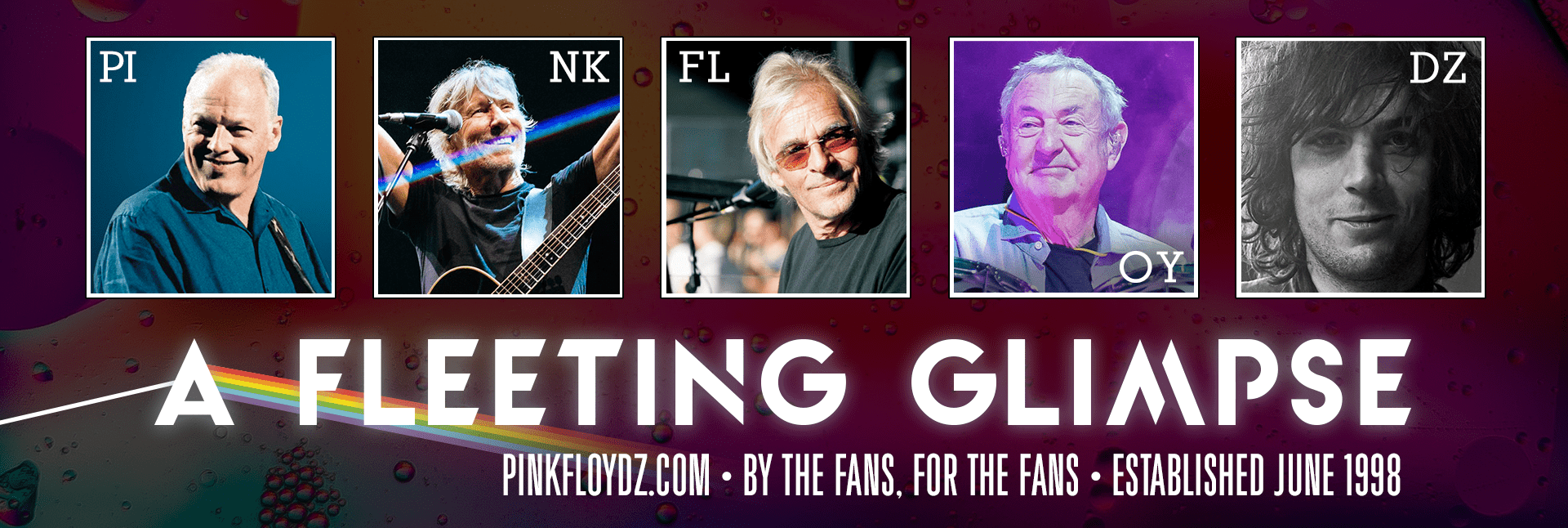WELCOME TO A FLEETING GLIMPSE – ESTABLISHED 1998
NOW IN IT’S 28TH BIG YEAR!
BREAKING NEWS & TOP STORIES
- NEW BOOK: Pink Floyd 1967 by Ed Paule
- Pink Floyd – Pittsburgh 20 June 1975
- Roger Waters This Is Not A Drill: Live From Prague – Cinema Screenings & CD/LP/Blu-Ray/DVD Release
- Download/Stream Now: David Gilmour’s Between Two Points Ft. Romany Gilmour – Gentry Remix
Created by the fans for the fans A Fleeting Glimpse is an online community for all things relating to Pink Floyd and its members, including various long-term collaborators associated with the band.
Preparations for this site commenced in early 1988, and the site was fully established in June 1998 by Col Turner. This site took many thousands of hours to build and has received MULTI MILLIONS of visitors from all over the world.
A Fleeting Glimpse is proud to have been endorsed by many band associates, including Guy Pratt, Dave Kilminster, Chester Kamen, Harry Waters, Durga McBroom, Ian Ritchie, Jay Stapley, Lee Harris, and many more.
If you haven’t visited us before, get set to discover one of the most comprehensive Pink Floyd sites on the internet!
If you have anything Floyd-related that you think may be of interest, drop a line to tony@pinkfloydz.com
You can also follow us for daily updates on our social media platforms Facebook | Instagram | Threads | YouTube
We do not receive any funding at all, so donations are most welcome. It does cost money to keep this site going, so even if you donate just $5 it can make a difference. (PayPal donations can be made by Clicking Here or using the donate button on the left.) Thank You!
As a convenience to you we are providing these Amazon Links USA | UK We are a participant in the Amazon Services LLC Associates Program, an affiliate advertising program designed to provide a means for us to earn fees by linking to Amazon.com and affiliated sites.
